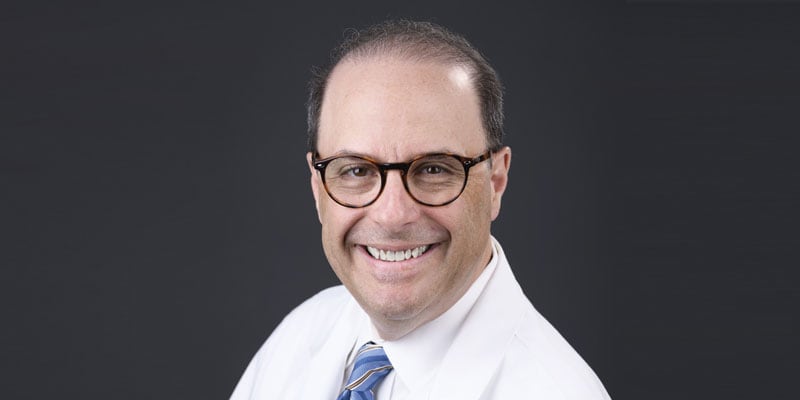Dr. Lee Surkin says a multi-faceted approach to sleep medicine includes sleep medicine collaborations between many types of healthcare practitioners.

Sleep matters. When I get consistent good quality sleep, I am focused, healthy, creative, and happy. A couple of late nights in front of a screen, and I have difficulty. And I bet that everyone else on the planet is the same.
Sleep medicine is a late comer to the field of medical research with the first sleep medicine clinic opening in 1964 at Stanford. Sleep medicine is now on the forefront of my mind and multiple news articles.
Over 20 years ago, my cardiac intake questionnaire included a question about sleep. It was just a general question about the amount of sleep and whether the patient felt rested. I then included a question for those who had a bed-partner regarding snoring. It didn’t take long for me to notice a direct correlation between my cardiac patients and their sleep. I was overwhelmed with the inconsistent sleep and the accompanying cardiac issues and knew that I had to learn as much as I could about sleep to provide the comprehensive care that my patients deserved.
In my early days of practice, I appreciated the elegance and effectiveness of CPAP for Obstructive Sleep Apnea (OSA). My patients’ cardiac status improved over time, but I became frustrated with the challenge of CPAP adherence. For the patients that were unable to tolerate CPAP, I sought out collaborative relationships with dentists in my region until I realized that there was a significant paucity of qualified and well trained sleep dentists. Besides CPAP and surgery, there were no other treatment options in my region.
Over the years, I have been a vocal proponent of a multi-faceted approach to treating OSA which has ultimately led to my involvement with DSP magazine and my role as chief medical officer of Nexus Dental Systems.
During my career as a cardio-sleep physician, I have cultivated relationships with many different specialities prioritizing an individualized approach to treating OSA. These include, but are not limited to dentists, ENT physicians, allergists, neurologists, bariatric and medical weight loss specialists amongst others. What has become apparent to me is the importance of an interdisciplinary approach that offers collaboration and synergistic care for the patient.
Be sure to read the recent interview with Dr. Lee Surkin on the National Geographic website: on.natgeo.com/3t1TaRR
The future of sleep medicine is evolving in this direction where active research is being undertaken to identify the complexities of OSA phenotyping and different management approaches.
Phenotypes under current research include age, sex, BMI, symptoms, hypoxemia, comorbidities, and OSA severity. When examined in the individual, therapeutic options will be more targeted and management options will be available based on a combination of variable clinical characteristics. Adjunctive therapies may include cognitive behavior therapy for insomnia, sedative hypnotic therapy, positional therapy, upper airway muscle training, or supplemental O2/CO2. Pending outcomes of current trials, these phenotypes are expected to become part of the fabric of OSA management.
A critical mission of sleep health care providers is engaging in efficient screening and appropriate referral for testing. The last decade has seen explosive growth in home sleep apnea test (HSAT) utilization. In part, this has been driven by the need for greater access, patient preference, and third party payer requirements. As technology advances so too will the ability to expand different metrics. In addition, the rise of artificial intelligence (AI) will result in a greater degree of accessible data resulting in increased diagnostic value and ultimately enhancing patient care.
One such example that highlights these advances is the development of algorithms that have the ability to extract data from heart rate variability. This information can be a valuable tool in assisting health care providers with a screening tool assessing cardiac arrhythmia risk.
Continuous research offers ongoing discoveries and advancements in patient care in sleep medicine. It is a responsibility of health care providers to incorporate new information in balance with their clinical training and expertise. As technological advancements become more widely accessible, we must not lose sight of the most critical aspect of health care delivery – the physician-patient relationship. Technology is a tool, not a replacement. There is no substitute for human interaction and the importance of a healthcare provider’s clinical judgment.
The future of sleep medicine is very bright, but remember to dim your lights several hours before bedtime and turn off your electronics!
Sleep medicine collaborations have led to exploring connections between sleep and heart health. See what Dr. Surkin says about the connection in “Addressing Poor Sleep May Help Heart Health,” at https://dentalsleeppractice.com/addressing-poor-sleep-may-help-heart-health/
- Zinchuk A. Yagi H; Phenotypic Subtypic of OSA: A Challenge and Opportunity for Precision Medicine, CHEST 2020; 157(2):403-420
- Eckert DJ. Phenotypic approaches to obstructive sleep apnoea – New pathways for targeted therapy. Sleep Med Rev. 2018 Feb;37:45-59. doi: 10.1016/j.smrv.2016.12.003. Epub 2016 Dec 18. PMID: 28110857.

